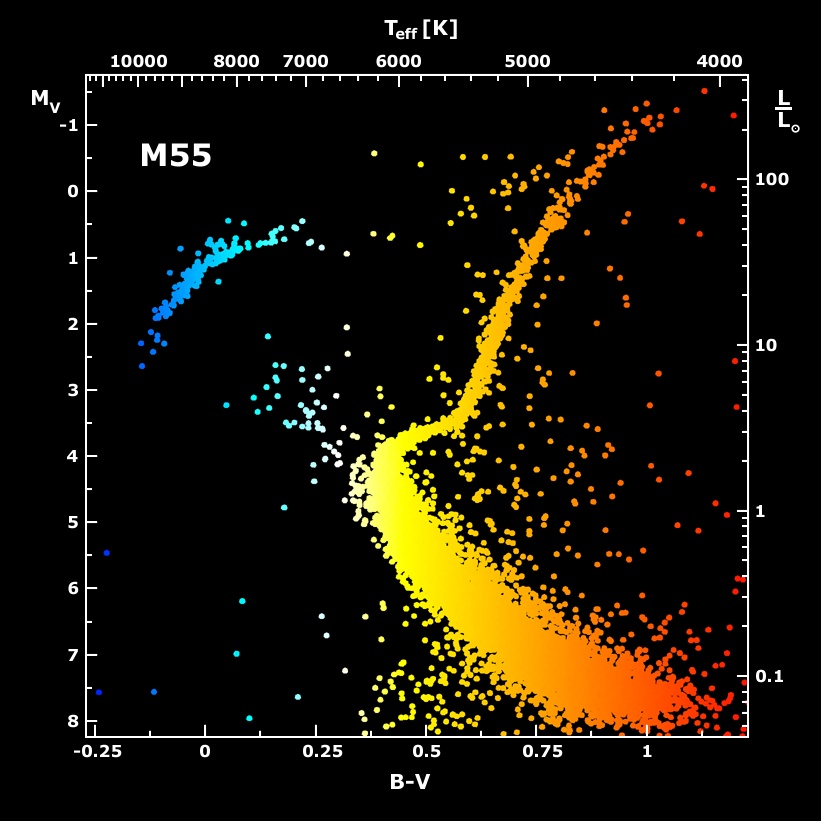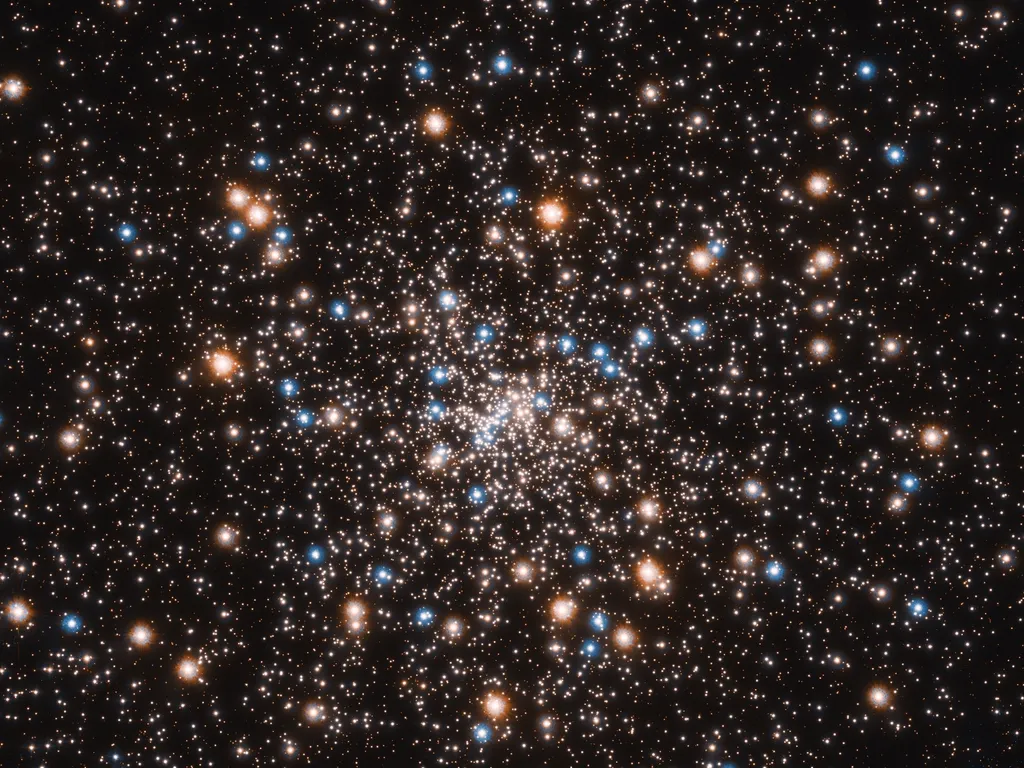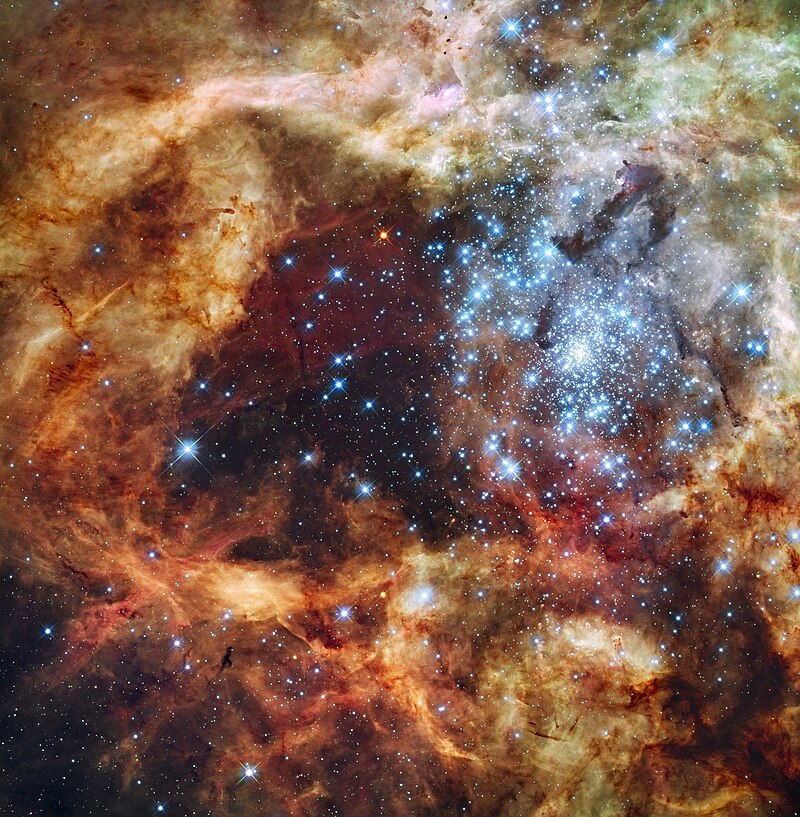johnnydeep wrote: ↑Thu May 20, 2021 8:03 pm
As others have already expressed, I have come to find globular clusters almost as interesting - and indeed beautiful - as galaxies. Their spherical symmetry, and oftentimes great age (12 Gy in this case), make me think of them fondly as wanna-be ellipsoidal galaxies, with eccentricity=0.
One observation: given the age and size of this GC, it seems inevitable that there would be a much-greater-than-stellar mass black hole in the center!
Now for the questions:
- Is there any evidence for a dark matter cloud around these clusters, meaning a concentration of dark matter greater than in the non-cluster areas of the Milky Way? [ Why does it seems almost every post these days asks about dark matter?

]
- With a cluster so old, yet with stars in chaotic orbits that often eject members, how is this reconciled? Did the cluster have many more member stars in the past, but the ejection rate - though larger than in true galaxies (if it happens at all there) - is still not large enough to dissipate the cluster even after 12 Gys, yet still leave such a large cluster even now?
- And how is the cluster age determined? By finding some very old stars?
- What are the black dots close to the core and best observable in the full image? They seem not to just be gaps in the population of stars, though perhaps that's just an optical illusion caused by the greater contrast with the more numerous stars toward the core. [Image below.]
- Other than the large background galaxy at lower left, how many others do people see? I have only found two very small ones on the far left middle. [Image below.]
Johnny, you asked:
1)
- Is there any evidence for a dark matter cloud around these clusters, meaning a concentration of dark matter greater than in the non-cluster areas of the Milky Way?
Answer: I'm too lazy to google, and I'm not hugely interested in dark matter. (Because there are no lovely colors in dark matter, are there?) But I'm pretty sure I've heard that, no, globular clusters don't seem to contain dark matter. But why not google it for yourself?
2)
- With a cluster so old, yet with stars in chaotic orbits that often eject members, how is this reconciled? Did the cluster have many more member stars in the past, but the ejection rate - though larger than in true galaxies (if it happens at all there) - is still not large enough to dissipate the cluster even after 12 Gys, yet still leave such a large cluster even now?
Sparse globular cluster NGC 5053 and rich globular cluster M53.
Photo: Bob Franke.
Answer: The globular clusters that we see today have most certainly lost a lot of stars since they were born! So yes, indeed, these clusters were even richer in stars than they are today when they were born some ~12 billion years ago! Some globular clusters have lost more stars than others, or, alternatively, they were born with fewer stars than others.
And that's also why a rich open cluster like R136a in the Large Magellanic Cloud will not be as rich as, say, M13 is today in twelve billion years' time. (Even though R136a is almost certainly going to exist as a cluster 12 billion years from now.) Actually, it wouldn't totally surprise me if M13 is still going to be richer in stars than R136a will be in twelve billion years.
3)
- And how is the cluster age determined? By finding some very old stars?
Color-magnitude diagrams are the principal tools for astronomers to determine the age of a cluster. In a young cluster like the Pleiades, nearly all stars fall along the main sequence line, where all the stars fuse hydrogen to helium in their cores, and the stars are brighter and bluer the more massive they are. (Similarly, the stars are fainter and redder the less massive they are.) In the Pleiades cluster, ~100 million years old, almost all the stars belong to the main sequence. But the most massive stars in the Pleiades have begun to evolve off the main sequence. They have grown larger and a bit brighter and also a little less blue. That fact is not very clear in the diagram at left.
In globular clusters, only low mass stars are still on the main sequence (labeled as MS in the diagram). Medium-mass and high-mass stars have evolved off the main sequence long ago. The really massive stars that once belonged to the globular clusters have died billions of years ago, and few stars in today's globulars are more massive than the Sun. Even the 12 billion year old red giants - and you can see the red giant branch, the RGB - are relatively low-mass stars in a globular cluster.
Rich globular cluster M53 and sparse globular cluster NGC 5053 both have color-magnitude diagrams similar to the color-magnitude diagram of globular cluster M3. That's how we know that NGC 5053 is a "real" globular cluster and not a much younger open cluster .
The more stars have evolved off the main sequence, the older the cluster is. The lower mass of the stars that have evolved off the main sequence, the older the cluster is.
But the ages of stars are also determined by their metal content, which is seen in their spectra. "Metals" in astro-speak mean elements heavier than hydrogen and helium, i.e., elements that were created by earlier generations of stars which died as either supernovas or red giants and in either case produced a lot of heavier elements during their death throes. These heavier elements then got mixed into the gas reservoir of galaxies, and later generations of stars, formed from gas richer in heavier elements than previous generations, will show their metal content in their spectra.
Globular clusters are so old that most of them are extremely metal-poor indeed. Very young clusters, like R136a in the Large Magellanic Cloud, are much more metal-rich (even though I believe that R136a is much more metal-poor than the Sun). For that reason, R136a will never evolve into a globular cluster similar to great globular cluster M13. For one thing, 12-billion-year-old R136a will lack the blue horizontal branch stars that are so prominent in M13. These blue stars represent a late evolutionary phase of very metal-poor stars, but more metal-rich stars never "turn blue" when they have evolved off the main sequence (except a very small number of extremely massive stars which may "turn blue" after they have "turned red" during their later evolution. But such exceptional stars don't affect the later evolution of clusters like R136a.).
What about your other questions? Sorry, you'll have to ask someone else!
Ann
 M13: The Great Globular Cluster in Hercules
M13: The Great Globular Cluster in Hercules




